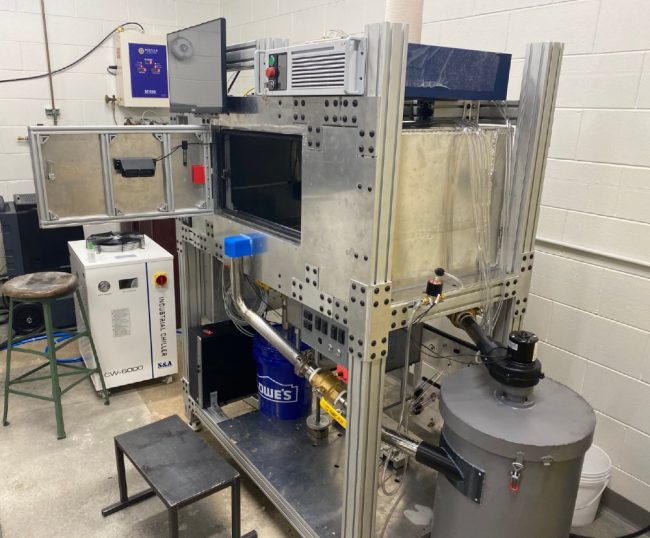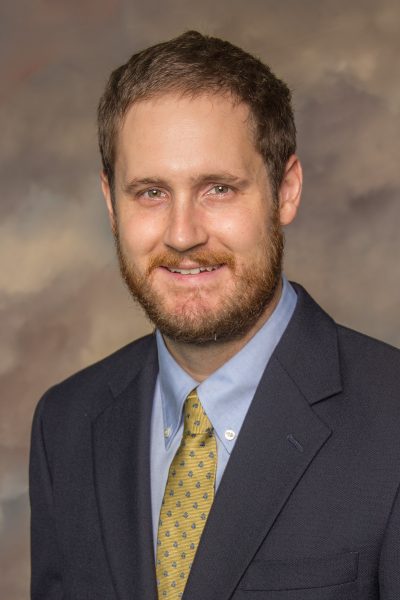Georgia Southern engineering students forge customized metal 3D printer

When Georgia Southern University manufacturing engineering professor Drew Snelling, Ph.D., realized the capabilities of the metal 3D printer in the Department of Manufacturing Engineering were lacking, he decided to build one from scratch.
Snelling recruited a student, Ryan Daigneault, who was then approached by another student, Michael Phillips, with an interest in joining the project, and under Snelling’s guidance they built a machine that is more customizable and controllable than a mass-produced one.

“In industry, we were modifying machines a lot, and we were even looking at buying basic machines and modifying those,” Snelling said. “With the money I had, I couldn’t buy an industrial machine, and even if I could, it wouldn’t be as customizable as this one. I’ve seen this done before at other places, and I’ve seen how much people try to modify these machines and the amount of cost that goes into it. I thought ‘We might as well just make one.’”
The machine is used in the additive manufacturing (AM) industry, the industrial production name for 3D printing. It uses selective laser melting to melt and fuse metallic powders together, layer-by-layer, to form a solid, 3D object. Machines like the one built by Phillips and Daignaeault are used in industries such as the aerospace, manufacturing and medical fields, among others, to make a variety of parts.
Building the machine, which is still being fine-tuned, was a long and complex process. The first step was to research the technology and how the machine works. The group then designed the main structure of the machine and ordered the necessary parts to build it. Then they divided each main system into smaller projects.
“Like any engineering problem, if you break down a complex problem, it consists of an array of simple problems,” Snelling said. “In short, it contains a build chamber, with a laser and a closed-loop inert gas system. Although there’s more to it, that is the general idea of operation. It’s several sub-components working as a system.”
All custom parts were fabricated by Phillips and Daigneault, and motors and other essential parts were ordered so they could build the system.
“We would take raw materials, and the students would do all the fabrication,” Snelling said. “One of the guys that worked with me learned to weld aluminum, and welded the entire build chamber, and it’s not an easy task. I provided guidance and took one of the students to see industrial machines, so he could see how other ones were designed. Other than that, they did everything themselves.”
Snelling said he wants to use the machine in research projects involving data collection and analysis, and use robotics in tandem with the 3D printer.
“We’re going to try to incorporate industrial robotics into the system, so we don’t have as much exposure to the machine’s environment,” Snelling said. “This includes harmful particles, which are not safe. We also want to use data collection analysis to quantify quality control. We can use various sensors or cameras in the machine to actually monitor and provide feedback to the system and identify where quality may be lacking to make a better part.”
Initially, Daigneault and Phillips didn’t plan on going to graduate school when they started building the machine, but now Daigneault is already enrolled and Phillips will start his program next fall.
“Through my research experience with Dr. Snelling, I have learned so much about how these machines work and about the process which led me to pursue a master’s here,” Phillips said. “My thesis will involve this technology and enable me to pursue a career in this field.”
Snelling said the machine will be used to give students professional experience, as a lot of the conceptual work involved with the custom machine can be translated to working with industrial equipment.
“I want to apply the experience I’ve gained to an additive division of a company or to implement similar processes to companies that are interested in this field,” Daigneault said. “For now, I hope the project helps with securing more projects with industry partners and that it will make me an asset professionally once I complete my masters.”
Posted in Faculty Highlights, Research

